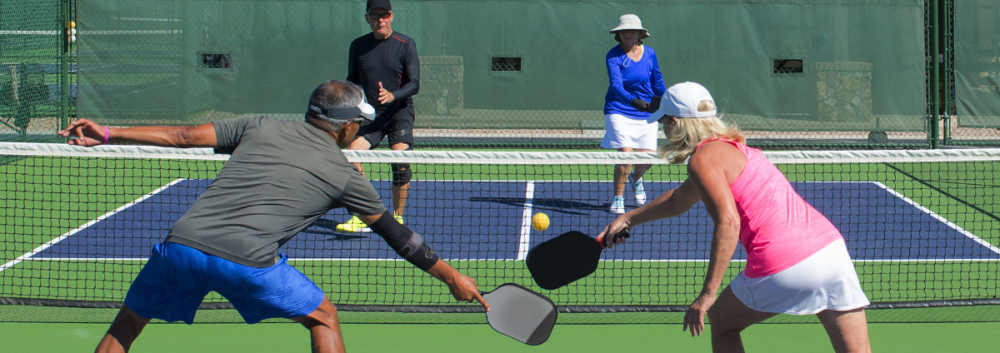Observation from this week’s PB sessions. The centre of the court is still proving a happy hunting ground for easy points. Generally, the centre would be the responsibility of the player with their forehand in the middle. So, assuming 2 righthanders, the player on the left of the court would have the main responsibility of covering the centre. However, if the left-hand court player is pulled wide the righthand court player should move across to cover the middle with their backhand. This is the basic principle of following the ball and moving laterally as a unit. It’s only a guideline but it is normal in tournament play for the stronger (and in our case possibly the more mobile) player to take the left-hand court as, with their forehand in the centre, they cover about 60% of the court. Dragging that player wide is a good strategy as the centre is then covered by their partner’s backhand.
You could think about dinking battles as an illustration. Dinks to the middle would normally be dealt with by the player with their forehand in the middle. Dinking wide to their backhand will mean the middle has to be covered by their partner who has to deal with a dink to the centre with their back hand. Advantage us! Most players’ backhands are less reliable that their forehand and more likely to dink into the net or pop the ball up to attack. Often, certainly at our level, they don’t get across to cover the middle anyway and leave the centre open for an easy point. And if nothing else we’ve got them moving, playing on their backhands and outside their comfort zone. Who knew dinking could be such fun!
PS. If a pair have a right-hander and a left-hander they would normally play both forehands down the middle. So if you are playing against them, all wide and down the line shots would go to their backhands. Worth remembering but wide and down the line shots have a higher risk of going out. The centre can still be profitable if they are not good at communication!
PPS. A pair with two left handers would normally play the same as two righthanders as described above. The stronger/more mobile player with their forehand down the middle but in the right-hand court.
